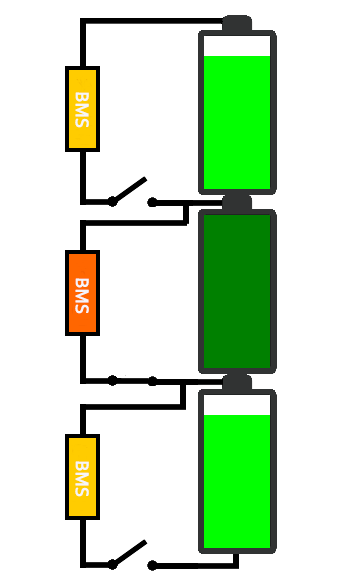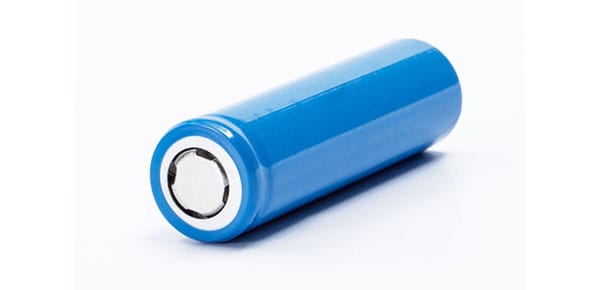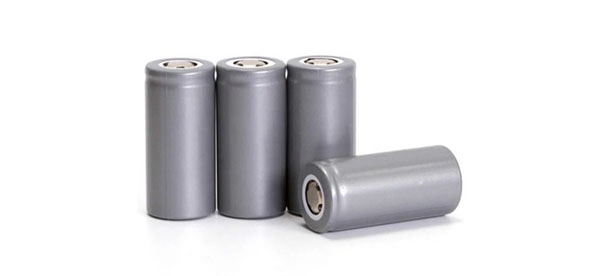اپنی مرضی کے مطابق نئی انرجی بیٹری ڈیزائن کی قیمتوں کی بنیادی باتیں
آپ کے حسب ضرورت بیٹری پروجیکٹس کے لیے قیمتوں کے تمام راز
When seeking a reliable new energy battery supplier, it’s natural to have several important questions. Let’s explore some of the most frequently asked questions to help you make an informed decision:
- How do I determine the cost of my custom lithium-ion battery?
- How can I identify the best battery supplier for my needs?
- How can I make the final decision on battery design?
- ویلیو انجینئرنگ کیا ہے، اور میں اسے کیسے پڑھ سکتا ہوں؟
While some may choose to obtain quotes from multiple suppliers and opt for the cheapest option, price alone should not be the sole determining factor. It’s important to consider other crucial aspects, such as quality, reliability, technical support, and long-term partnership potential.
In this article, we aim to provide valuable insights into the secrets of the lithium battery industry to help you navigate the decision-making process effectively. Let’s dive in and explore the essential aspects that will empower you to make an informed choice for your energy storage needs.

لتیم بیٹری پیک کے 4 اہم حصے
When it comes to a lithium battery pack, there are four main components that play vital roles in its functionality and performance:
-
Battery Cell Type: The battery cell type refers to the specific configuration and chemistry of the cells used in the pack. The three common types are cylindrical battery cells, prismatic cells, and pouch cells. Each type has its own advantages and considerations, such as energy density, form factor, and manufacturing cost.
-
پی سی ایم یا بی ایم ایس (پروٹیکشن سرکٹ ماڈیول یا بیٹری مینجمنٹ سسٹم): The PCM or BMS is responsible for managing and protecting the battery pack. It performs essential functions such as short-circuit protection, over-charge protection, over-discharge protection, over-current protection, and temperature monitoring (NTC). Additionally, it monitors battery status parameters like State of Charge (SOC), State of Health (SOH), State of Power (SOP), and facilitates communication with the battery through protocols like CAN (Controller Area Network).
-
بیٹری انکلوژر: The battery enclosure refers to the protective housing or casing that holds the battery cells and other components securely. Enclosures can be made of materials like PVC wrapping, plastic enclosures, or metal enclosures. PVC wrapping is commonly used due to its cost-effectiveness and versatility, often requiring minimal Minimum Order Quantity (MOQ).
-
Connector: Connectors play a crucial role in the battery pack, enabling the electrical connection between the battery and the device or system it powers. While connectors may not be the primary concern, they can contribute to the overall cost of the battery pack. Some connectors can be expensive, impacting the total battery cost.

بیٹری سیل
For lithium battery cells, we want to explain in detail from two perspectives: Cell Type and Battery Material.
A. Cell Type:
Lithium battery cells can be categorized into three main types: Pouch cells, Prismatic cells, and Cylindrical cells.
پرزمیٹک یا پاؤچ سیلز، جنہیں عام طور پر لیپو سیل کہا جاتا ہے، الیکٹرانک آلات میں بڑے پیمانے پر استعمال ہوتے ہیں۔ یہ ہلکے وزن والے خلیے ہمارے پورٹیبل گیجٹس میں پائے جاتے ہیں اور آر سی ہیلی کاپٹرز اور کواڈ کاپٹرز میں پائے جاتے ہیں۔ تاہم، ان کے پاس کم از کم آرڈر کی مقدار (MOQ) تقریباً 3,000 یا 5,000 یونٹس فی آرڈر ہو سکتی ہے۔

Cylindrical cells like the popular 18650 or 26650 are extensively utilized in battery packs. These cells are readily available in the market with a wide range of pricing options, ranging from $0.5 to $4 per cell. Customized models of cylindrical cells usually have small MOQs, but it’s important to consider their cylindrical form factor, which may limit space utilization.
B. بیٹری کے اجزاء:
بیٹری مینوفیکچرنگ میں استعمال ہونے والے اجزاء مختلف فیکٹریوں میں مختلف ہو سکتے ہیں، اور خام مال کا انتخاب ایک اہم کردار ادا کرتا ہے۔ یہ نوٹ کرنا ضروری ہے کہ استعمال شدہ خام مال کی بنیاد پر قیمتوں میں اہم فرق ہو سکتا ہے۔ کچھ بیٹری سیلز 2200mAh کی صلاحیت کا دعویٰ کر سکتے ہیں، لیکن وہ زندگی کے چکر یا مجموعی کارکردگی کی قربانی دے کر اسے حاصل کرتے ہیں۔ اگرچہ ان کی صلاحیت کی درجہ بندی زیادہ ہو سکتی ہے، لیکن عام خلیات کے لیے معیاری 500 سائیکلوں کے مقابلے، ان کی زندگی کی توقع کافی کم ہو سکتی ہے، تقریباً 300 چارج سائیکل۔
ایک اور اہم غور صلاحیت پر مرکوز خلیوں اور خارج ہونے والے (ہائی ڈرین) خلیوں کے درمیان فرق ہے۔ ہمارے تجربے کی بنیاد پر، کچھ مینوفیکچررز بیٹری پیک میں صلاحیت پر مرکوز سیل استعمال کرنے کی کوشش کر سکتے ہیں جن کے لیے زیادہ خارج ہونے والی صلاحیتوں کی ضرورت ہوتی ہے، جیسے کہ بیلنس اسکوٹر میں۔ اس کی وجہ اکثر لاگت سے متعلق ہوتی ہے، کیونکہ صلاحیت پر مرکوز خلیے عام طور پر خارج ہونے والے خلیات سے سستے ہوتے ہیں۔ تاہم، بیلنس اسکوٹر جیسے آلات کو اکثر 3-5C کے C-ریٹ کی ضرورت ہوتی ہے، جو زیادہ سے زیادہ صلاحیت پر مرکوز سیلز کو سنبھال سکتے ہیں۔ اس کے برعکس، ڈسچارج فوکسڈ سیلز اس طرح کی اعلی C-ریٹ کی ضروریات کو سنبھالنے کے لیے بنائے گئے ہیں، عام طور پر 5C سے 20C تک۔
It’s important to understand that there is no clear distinction between capacity-focused cells and discharge-focused cells, and their categorization ultimately lies in the hands of the manufacturer. Therefore, it becomes crucial to conduct your own testing to evaluate the performance and suitability of different battery cells for your specific application.
Takeaway: The classification of battery cells as capacity-focused or discharge-focused is not standardized and can vary among manufacturers. It is essential to thoroughly test and evaluate different cells to ensure they meet the specific requirements of your application, especially when it comes to high-discharge applications.
C. بیٹری گریڈ:
Battery cells undergo grading based on A, B, C, or further classifications such as A+, A-, B+, and B-. Let’s consider the example of Samsung 18650 2200mAh cells in mass production. Before being released to the market, each cell undergoes a final grading process. Cells with a capacity of 2200mAh and a life cycle of around 500 cycles are labeled as Grade A. Cells with a capacity below 2100mAh are labeled as Grade B, and cells with a life cycle of less than 300 cycles are categorized as Grade C. Please note that these numbers are for reference only, and for more professional advice, we recommend reaching out ہماری سیلز ٹیم کو۔

یہ درجہ بندی کیوں ہوتی ہے؟ جواب آسان ہے: ہر سیل 2200mAh اور 500 لائف سائیکل کی عین صلاحیت کے ساتھ تیار نہیں ہوتا۔ کارکردگی میں تغیرات ہیں، کچھ خلیات 2400mAh سے زیادہ ہیں اور دیگر 1800mAh سے نیچے ہیں۔ سام سنگ جیسے سیل مینوفیکچررز کے اعلیٰ پیداواری کنٹرول کے باوجود، اس طرح کے تغیرات ناگزیر ہیں۔
Battery cells are graded based on factors like capacity, life cycle, and sometimes appearance, using the categories of A, B, C, and D. However, it is important to note that there are no universally defined industrial standards for what constitutes Grade A or Grade B. The grading criteria can vary among manufacturers. Hence, the designation of a cell as Grade A is often just a marketing slogan without much practical significance. However, reputable branded cells tend to place greater emphasis on maintaining higher quality standards. Therefore, it is advisable to choose branded cells whenever possible.
اہم ٹیک وے: When assembling battery packs with more than four cells, it is crucial to ensure that the cells used are of the same grade, preferably Grade A. Mixing cells of different grades increases the risk of shorter battery life or even the potential for explosion. This is not meant to scare you but rather to emphasize the importance of maintaining cell consistency and balance in battery packs.
Related: ویکیپیڈیا بیٹری بیلنسنگ
اس منظر نامے پر غور کریں جہاں 2100mAh، 2200mAh، 2200mAh، اور 1950mAh کی صلاحیتوں والے چار سیل ایک ساتھ چارج کیے جا رہے ہیں۔ اگر 1950mAh سیل دوسروں سے پہلے مکمل چارج ہو جاتا ہے، لیکن چارجر باقی خلیوں کی صلاحیت کی بنیاد پر توانائی فراہم کرتا رہتا ہے، تو چارجنگ کے عمل کے دوران آگ لگنے یا دھماکے کا خطرہ زیادہ ہوتا ہے۔ خلیوں کے درمیان صلاحیت میں جتنا زیادہ فرق ہوگا، تباہ کن نتائج کا امکان اتنا ہی زیادہ ہوگا۔

Furthermore, it is essential to be cautious when purchasing batteries to avoid counterfeit or fake products. Opting for fake Samsung or Sony cells purely for the sake of a cheaper offer can lead to detrimental consequences for your customers and your company. Remember the recall story of Samsung Note 7, which caused significant harm and reputation damage. You certainly don’t want to face a similar situation, risking your business and potentially facing legal consequences.
D. کاروبار کی قسم:
Many buyers have the misconception that they should only deal directly with battery cell manufacturers. However, this perspective may not hold much practical significance. Instead, we recommend focusing on the professionalism and capabilities of the supplier you are engaging with, regardless of whether they are a cell maker or not.
Allow us to explain further to clear any confusion.
Let’s begin with a simple question: Who are the best lithium cell/pack manufacturers? Names like Samsung, LG, Sony, and Panasonic immediately come to mind. However, dealing directly with these giants may not be feasible for most buyers due to their high minimum order quantities (MOQ) of 500,000 units per order.
یہ ایک تلخ حقیقت ہے۔
This is also true for many Chinese cell makers who may not prioritize small-scale orders. Their operations revolve around maximizing machine utilization by running continuously 24/7. If accommodating a new model or fulfilling a small order disrupts their production flow, it is unlikely they will entertain such requests.
So, where does that leave you? You may find yourself dealing with third, fourth, or even fifth-level traders or manufacturers, rather than interacting directly with the cell makers.
اب، آئیے واپس سیمسنگ سیل کی مثال کی طرف چکر لگاتے ہیں۔ اگر ایک پیک مینوفیکچرر 500,000 یونٹس فی سیل قسم کے بڑے پیمانے پر MOQ کو پورا نہیں کر سکتا (صرف ایک مہینے کے لیے نہیں بلکہ کئی مہینوں یا سالوں کے لیے)، وہ تاجروں سے ماخذ لینے پر مجبور ہیں۔
You can probably guess the answer when it comes to second-hand traders.
Feeling frustrated by not being able to engage directly with cell makers? The reality is that the supply chain involves various levels of intermediaries. Instead of fixating on whether you are dealing directly with a cell maker, focus on finding a reputable supplier with the necessary expertise and professionalism to meet your specific requirements.
یاد رکھیں، کلید ایک ایسے سپلائر کے ساتھ شراکت داری ہے جو آپ کی ضروریات کو سمجھتا ہے، قابل اعتماد مصنوعات فراہم کرتا ہے، اور غیر معمولی خدمات پیش کرتا ہے۔ چاہے وہ سیل بنانے والے ہوں، تاجر ہوں، یا مینوفیکچرر ہوں، بیٹری کے معیاری حل فراہم کرنے کی ان کی قابلیت واقعی اہم ہے۔



















